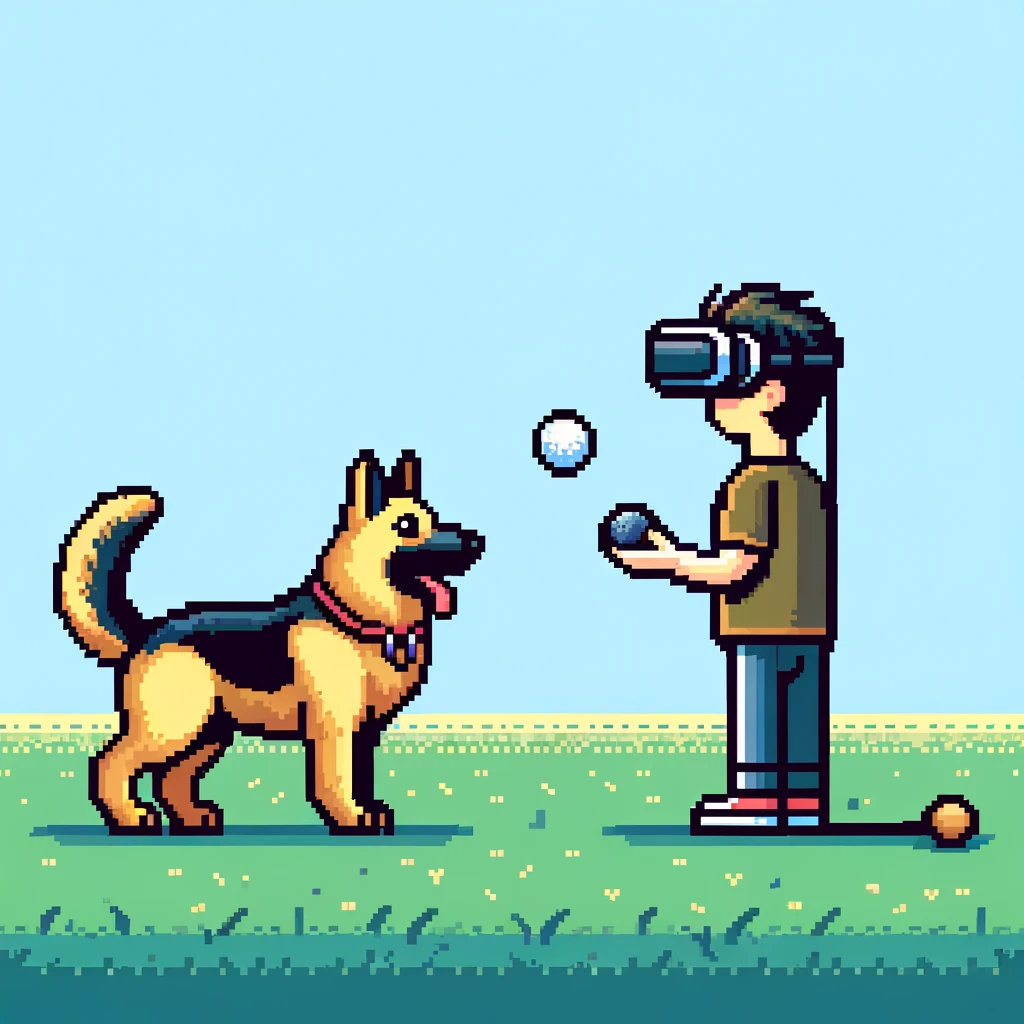
Bridging Real and Virtual: Understanding Human-Dog Interactions in Virtual Reality for Pet Owners
Imagine living in a world where you can play fetch with your furry friend or train them to walk calmly on a leash—all without a real dog. Virtual reality (VR) is transforming the way we interact with dogs, helping researchers and therapists address fears and phobias in a controlled environment. But how close does this come to reality? In their systematic scoping review, Oxley and colleagues sought to map how virtual and augmented reality (AR) technologies replicate human-dog interactions and address gaps in current studies. Here’s what pet owners and dog lovers should know about this exciting intersection of technology and animal behavior.
Understanding the Research Focus
Dogs are the most popular pets in the UK, with millions of families sharing their lives with a furry companion. Given the prevalence of dog phobias and injuries from bites, researchers are keen to understand how VR can aid in treatment, education, and even emotional support.
Oxley’s team found that most studies primarily aimed to simulate human-dog interactions with the intention of treating cynophobia (fear of dogs) or providing immersive educational experiences. The technology typically uses computer-generated or video-recorded dog models, simulating various breeds and behaviors through VR headsets or projection systems.
Key Findings and Their Significance
- Therapeutic Impact: VR therapy showed significant potential in treating dog phobias, with one study reporting that 75% of children recovered within a month of a single-session treatment. This technology offers immersive environments where patients can safely face their fears, promoting gradual desensitization.
- Equipment Variation: Virtual environments were simulated using a variety of equipment, from head-mounted displays (HMDs) to full-scale projection rooms (CAVEs). However, different navigation methods and hardware made comparing studies challenging.
- Dog Models and Behavior: The virtual dog models often replicated common breeds like German Shepherds and Rottweilers. Their behaviors ranged from growling to sitting. The study highlighted a lack of consistency in the fidelity of these models, potentially affecting their therapeutic efficacy and the perception of specific breeds.
- Quality of Models: Only two studies detailed the visual quality of the dog models (polygon or vertex counts). Higher-quality models offer more realistic behavior simulations but require significant development time and resources.
- Future Collaboration: The review emphasizes the need for collaboration between dog behavior experts and VR developers to ensure accurate representations that can aid phobia treatment and educational interventions.
Relevance for Pet Owners
For dog owners and enthusiasts, these findings open a window into the future of canine care and training. Here’s why this matters:
- Phobia Treatment: Dog owners know that an animal’s bark can trigger fear in those with past traumatic experiences. VR can help expose patients gradually, reducing the chances of panic during real-life interactions.
- Educational Value: Teaching children how to interact with dogs safely is essential. Using VR, they can learn to recognize stress signals and appropriate behaviors in a controlled setting.
- Training and Assistance: Virtual models can complement real-world training by providing practice scenarios, especially for individuals who cannot own a real dog due to allergies or living arrangements.
Encouraging Engagement: Discussion Questions
- If you’ve used any VR simulations before, how do you think this technology could change the way we understand and interact with dogs?
- For those who have a dog phobia or know someone who does, what features would you find most important in a virtual training environment?
Conclusion
Oxley’s review brings to light the immense potential of VR in enhancing human-dog interactions. From therapeutic applications to education and entertainment, the technology’s evolution requires thoughtful development and expert collaboration. As virtual dog models become more refined and accurate, they can help individuals overcome fears, learn effective training techniques, and ultimately foster a deeper connection between humans and dogs.




